Here are the longest blooming annuals that give you nonstop flowers till frost while providing a beautiful, low-maintenance garden.
If you’re tired of flowers that fizzle out too soon, try these annuals that bloom for months and keep your garden looking colorful and alive until the first frost. They’re also easy to grow, so you won’t have to spend your whole summer fussing over them!
Longest Blooming Annuals For Nonstop Color Till Frost
1. Zinnia
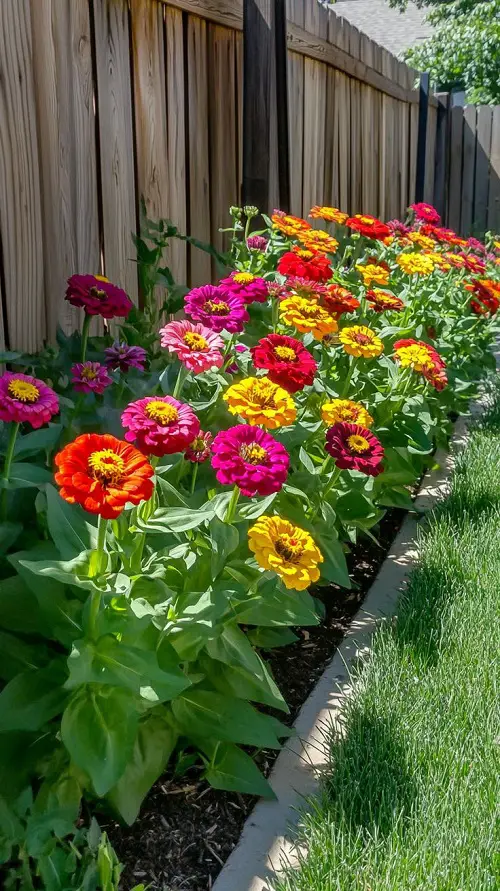
Botanical Name: Zinnia elegans
Bloom Time: Early summer to first frost
Zinnias are one of the toughest and brightest flowers you can grow. They start blooming in early summer and keep going strong until cold weather hits, and come in nearly every color and size, from small pom-poms to large dahlia-like flowers.
They thrive in full sun and well-draining soil. Once established, they’re quite drought-tolerant and need only occasional watering during dry spells. They’re also a favorite for pollinators like bees and butterflies, and their petals can even be used for natural dyeing projects.
Pro Tip: Choose varieties like ‘Benary’s Giant’ for big, bold flowers perfect for cutting gardens.
2. Petunia
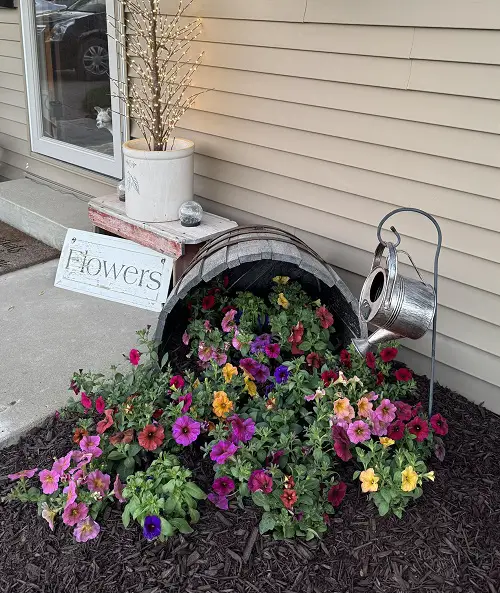
Botanical Name: Petunia hybrida
Bloom Time: Late spring to first frost
Petunias are some of the most prolific and reliable bloomers you can grow. From late spring right through to the first frost, they produce trumpet-shaped flowers in shades of pink, purple, red, and white.
Modern hybrids like Wave or Supertunia types are bred for nonstop blooms and minimal maintenance, so they’re great in hanging baskets, pots, or as bedding plants. They also have a soft fragrance, especially noticeable in the evening.
Keep petunias happy by planting them in full sun and feeding them every couple of weeks. If they get leggy, a midseason trim helps them bounce back with more flowers.
3. Marigold
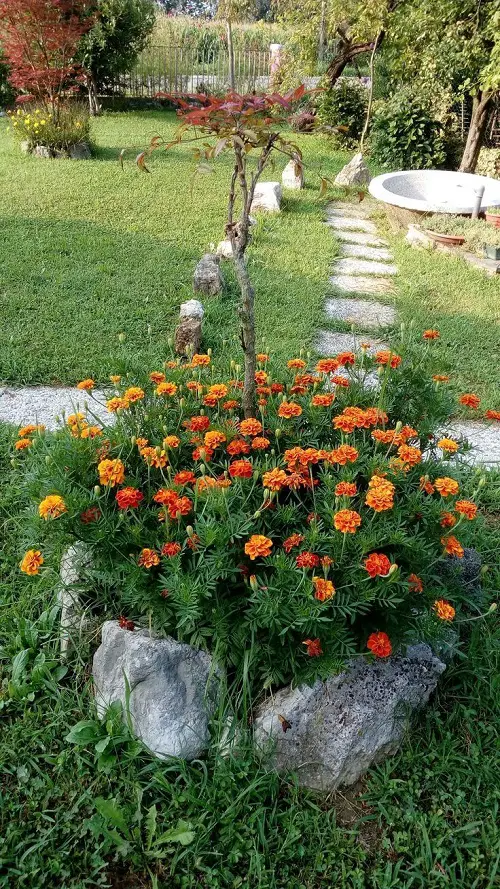
Botanical Name: Tagetes spp.
Bloom Time: Early summer to first frost
Marigolds bloom from early summer all the way into fall, filling your garden with warm shades of yellow, orange, and gold. They’re known for their bright color and their pest-repelling qualities, making them useful near vegetable gardens to deter nematodes.
There are two main types–French marigolds, which stay small and bushy, and African marigolds, which grow taller with bigger blooms. They’re unfussy plants that tolerate heat and poor soil, so they’re perfect for low-maintenance gardeners.
Their petals are edible and add color to salads or teas, although the flavor is somewhat bitter.
4. Celosia
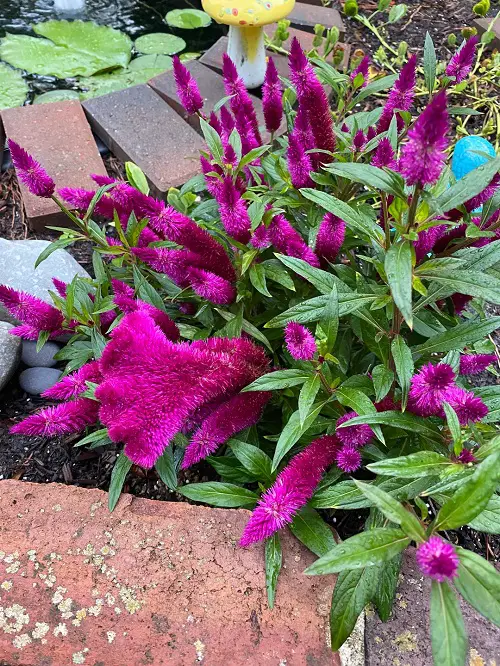
Botanical Name: Celosia argentea
Bloom Time: Early summer to first frost
Celosia is the flower for you if you want something unique. It blooms from summer till fall, producing blooms shaped like feathery plumes, coral-like fans, or tight crests, depending on the variety.
These plants love heat and sunshine. They also tolerate poor soil, so they’re great if your garden soil isn’t perfect.
Celosia is eye-catching in borders, pots, or as a cut flower, and you can even dry the blooms for colorful indoor arrangements.
Interestingly, the seeds and leaves are edible in some cultures, where they’re used in cooking as a leafy green.
Pro Tip: Cut celosia stems for drying when the flowers are fully colored but before they fade.
5. Lantana
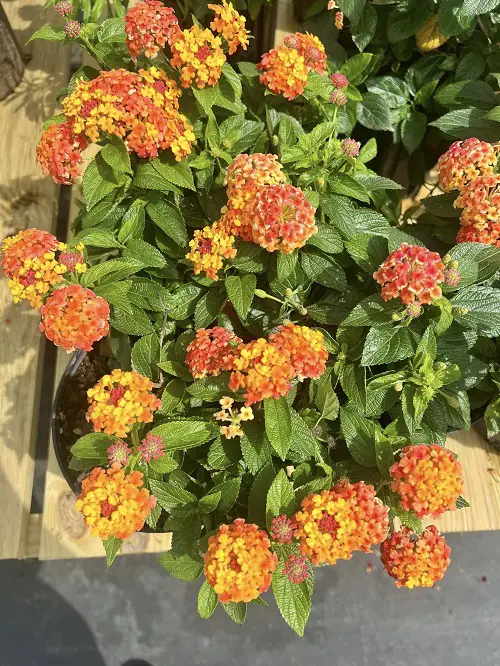
Botanical Name: Lantana camara
Bloom Time: Late spring to frost
Lantana blooms from late spring until the beginning of fall and sometimes even in winter if you live in a warm, frost-free climate, producing tight clusters of tiny flowers that often change color as they age. You might even see a single cluster with shades of pink, orange, and yellow all at once.
It’s a magnet for butterflies, bees, and other pollinators, and it thrives in hot, sunny spots. Lantana is also very drought-tolerant once established, making it perfect for gardeners who don’t want to water constantly.
In frost-free areas, lantana can be perennial, but in most climates, it’s grown as an annual. But be cautious, though—lantana berries are toxic if eaten by pets or children.
6. Verbena
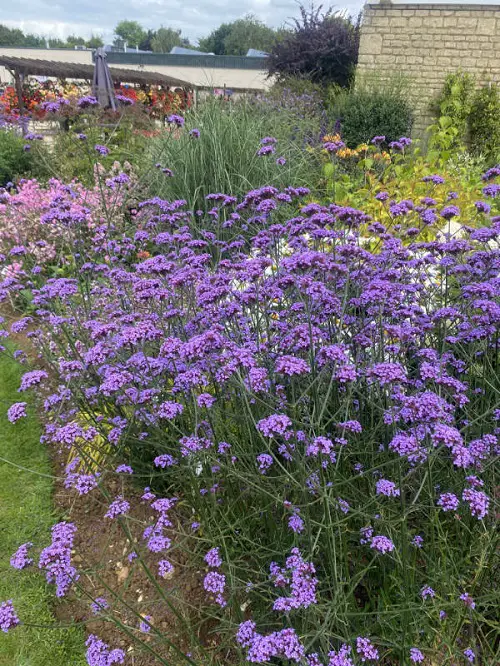
Botanical Name: Verbena
Bloom Time: Late spring to frost
Verbena is a long-blooming plant that keeps your garden colorful from late spring into fall. It produces clusters of small flowers in shades of purple, pink, white, and red.
There are upright types great for garden beds and trailing varieties perfect for spilling over containers and hanging baskets.
Verbena loves full sun, tolerates heat and drought, and even handles salty soil, making it an excellent choice for coastal gardens. Just make sure to plant them in well-draining soil to avoid root rot problems. They’re also great at keeping deer away.
Pro Tip: Pinch back the tips early in the season to help plants grow fuller and produce even more blooms.
7. Cosmos
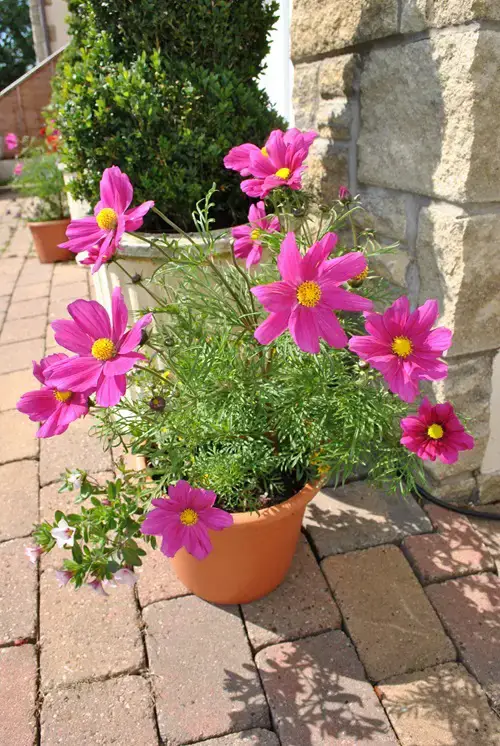
Botanical Name: Cosmos bipinnatus
Bloom Time: Early summer to frost
Cosmos brings an airy, graceful look to gardens, blooming from early summer until frost. The flowers look like daisies in colors ranging from white and pink to bright magenta.
They grow best in full sun and prefer soil that’s not too rich; nitrogen-rich fertilizer makes them grow tall and leafy instead of producing flowers. Cosmos are incredibly easy to grow, often thriving even in poor soil. Display them like this if you want them to look their best!
They’re also excellent for attracting bees, butterflies, and birds. Plus, they make great cut flowers that last several days in a vase.
8. Salvia
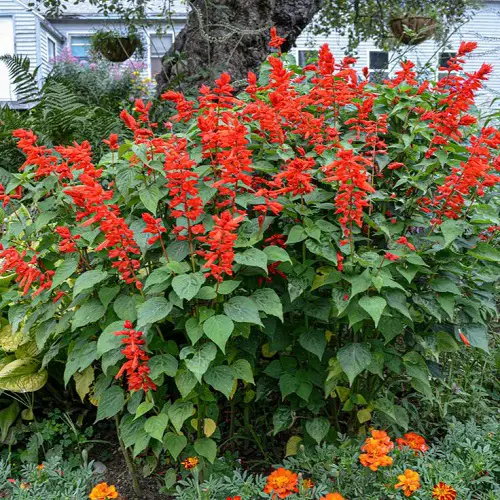
Botanical Name: Salvia splendens
Bloom Time: Late spring to frost
Salvia lights up the garden from late spring up until late fall with its tall spikes of bright red, purple, or blue flowers. These bold, upright, longest blooming annuals are perfect for adding height and texture among softer plants.
It loves full sun and well-drained soil. It’s also deer-resistant and rarely troubled by pests, which makes it a smart choice if animals tend to snack on your plants.
Many salvias attract hummingbirds and bees, making them both beautiful and beneficial for wildlife. Removing spent flower spikes encourages even more blooms and keeps the plants looking neat.
With these long-blooming annuals, your garden can stay full of color and life right up until frost arrives. Pick a few favorites, give them some sun and care, and enjoy months of cheerful blooms!


